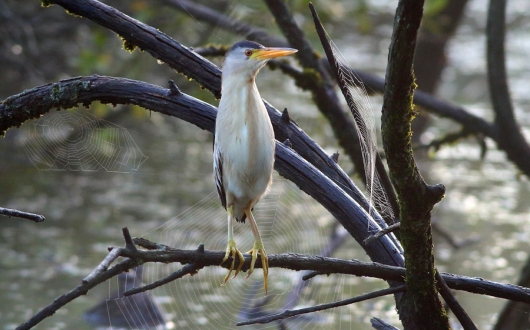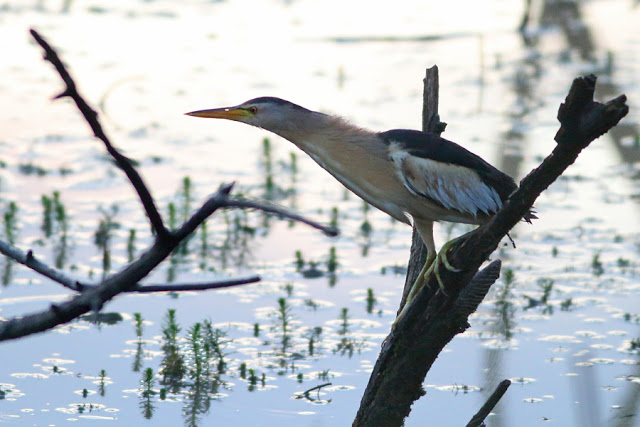Sometime at the beginning of August, photos of the little bittern, our smallest heron, began to emerge in online science galleries. When I was informed about its presence in the home area, it was time for action. Accessing ‘our’ pond is quite difficult in the middle of summer; and if I add all the bloodsuckers and the perfect counter light, quality photos are mission impossible.
Despite everything, I put on the mask and waited for my opportunity, at least to get a decent documentary clip.
Within half an hour, at least three little bitterns stepped in front of the lens.
These were probably migrating specimens, as little bitterns had not been noticed in the pond during the nestling time.
They were flying here and there above the pond, hiding in bulrush and catching prey in dry sunken bushes. Once I finished the session, it turned out that herons were not nearly as timid and careful as their larger relatives.
A regular visitor to the pond is also the common kingfisher; nesters are rails, little grebes, swans, probably also some water rails and other small birds in bulrush, such as the marsh warbler and the great reed warbler.
Despite the very poor boundary conditions, I am now completely satisfied with the result. Of course, it took quite a bit of patience to process the photos. The moral of the story: no matter how poor the lighting conditions are, never give up. The same applies to the weather.








